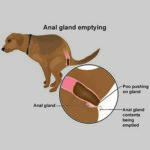How To Tame An Aggressive Dog
Taming an Aggressive Dog: A Guide to Safe and Effective Training
Dogs are known to be man’s best friend, but sometimes, even the friendliest of dogs can suddenly become overly aggressive. This behavior can be dangerous not only for the people around them but also for the dog itself. If you have an aggressive dog, it is essential to take immediate action to prevent any unfortunate incidents from happening.
In this article, we will provide you with a detailed guide on how to tame an aggressive dog effectively and safely. We will cover various aspects of training, including understanding the reasons behind your dog’s aggression, identifying early warning signs, and implementing appropriate strategies for behavioral modification.
Understanding Aggression in Dogs
Before starting any training program, it is crucial to understand why your dog is behaving aggressively. There are several reasons why a dog may exhibit aggressive behavior, such as fear, territoriality, possessiveness, pain or discomfort, frustration or inadequacy, and socialization issues.
Fear aggression is one of the most common types of aggression seen in dogs. It occurs when the dog perceives a threat or danger and responds with aggression to protect itself. Territorial aggression happens when a dog feels threatened by someone entering its territory. Possessive aggression occurs when a dog becomes protective of its toys or food and reacts aggressively towards anyone who tries to take them away.
Pain or discomfort can also cause dogs to behave aggressively if they feel that someone is causing them harm. Frustration or inadequacy can result from lack of exercise or stimulation that leads to pent-up energy and frustration. Socialization issues are commonly seen in rescue dogs that have had negative experiences with humans or other animals in their past.
Identifying Early Warning Signs
It is essential to identify early warning signs of aggressive behavior before they escalate into dangerous situations. Some common signs include growling, barking excessively, snapping or biting, raised hackles, and intense staring. If you notice any of these signs in your dog, it is crucial to take immediate action to prevent the situation from escalating.
Implementing Appropriate Strategies for Behavioral Modification
The best way to stop aggressive behavior in dogs is through behavioral modification training. Here are some strategies that can help you train your aggressive dog effectively.
1. Gradual Exposure
Gradual exposure means exposing your dog gradually to the things that frighten or trigger its aggression. For example, if your dog is afraid of strangers, start by introducing it to one person at a time and gradually increase the number of people over time.
2. Desensitization
Desensitization involves exposing your dog to the stimulus that causes its aggression while rewarding it for being calm and non-aggressive. This technique requires patience as it may take several sessions before your dog becomes desensitized to the stimulus.
3. Counter-Conditioning
Counter-conditioning involves changing your dog’s emotional response towards the stimulus that triggers its aggression. For example, if your dog is aggressive towards other dogs, you can start by rewarding it for calm behavior around other dogs.
4. Positive Reinforcement
Positive reinforcement involves rewarding good behavior with treats, toys, or praise. This technique is essential in shaping your dog’s behavior towards positive outcomes.
5. Professional Help
If you are struggling with training your aggressive dog, seeking professional help from a certified dog trainer or behaviorist is highly recommended.
Conclusion
Aggressive behavior in dogs can be scary and dangerous, but it is not impossible to tame an aggressive dog with effective training techniques. It is essential to understand why your dog is behaving aggressively and identify early warning signs before they escalate into dangerous situations. Implementing appropriate strategies for behavioral modification like gradual exposure, desensitization, counter-conditioning, positive reinforcement, and seeking professional help can significantly improve your dog’s behavior and ultimately create a safer environment for you and your furry friend.



